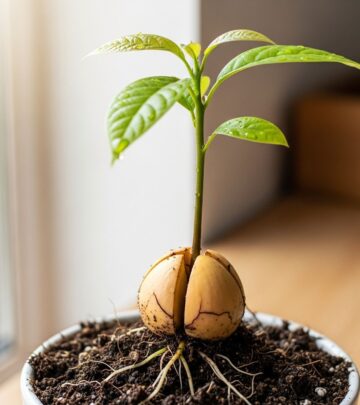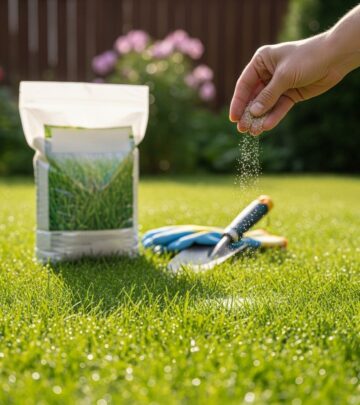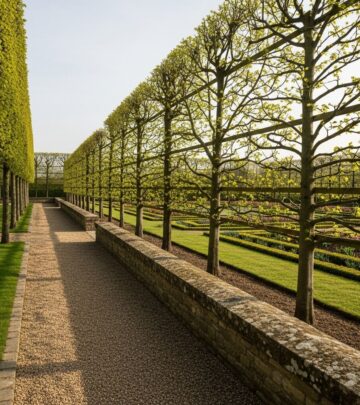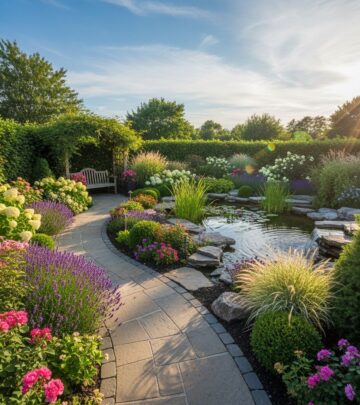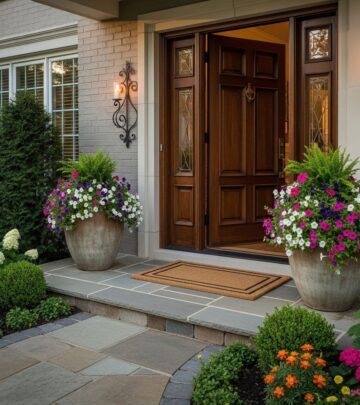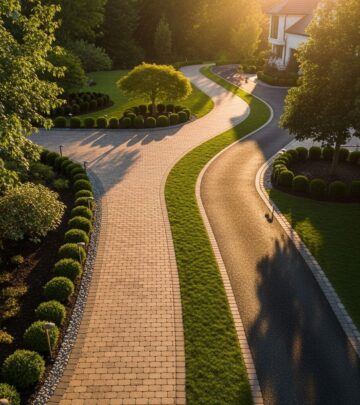Pea Gravel Landscaping: 5 Easy, Affordable Design Ideas
Discover why pea gravel remains one of the most versatile, budget-friendly and aesthetically pleasing options for your garden hardscaping projects
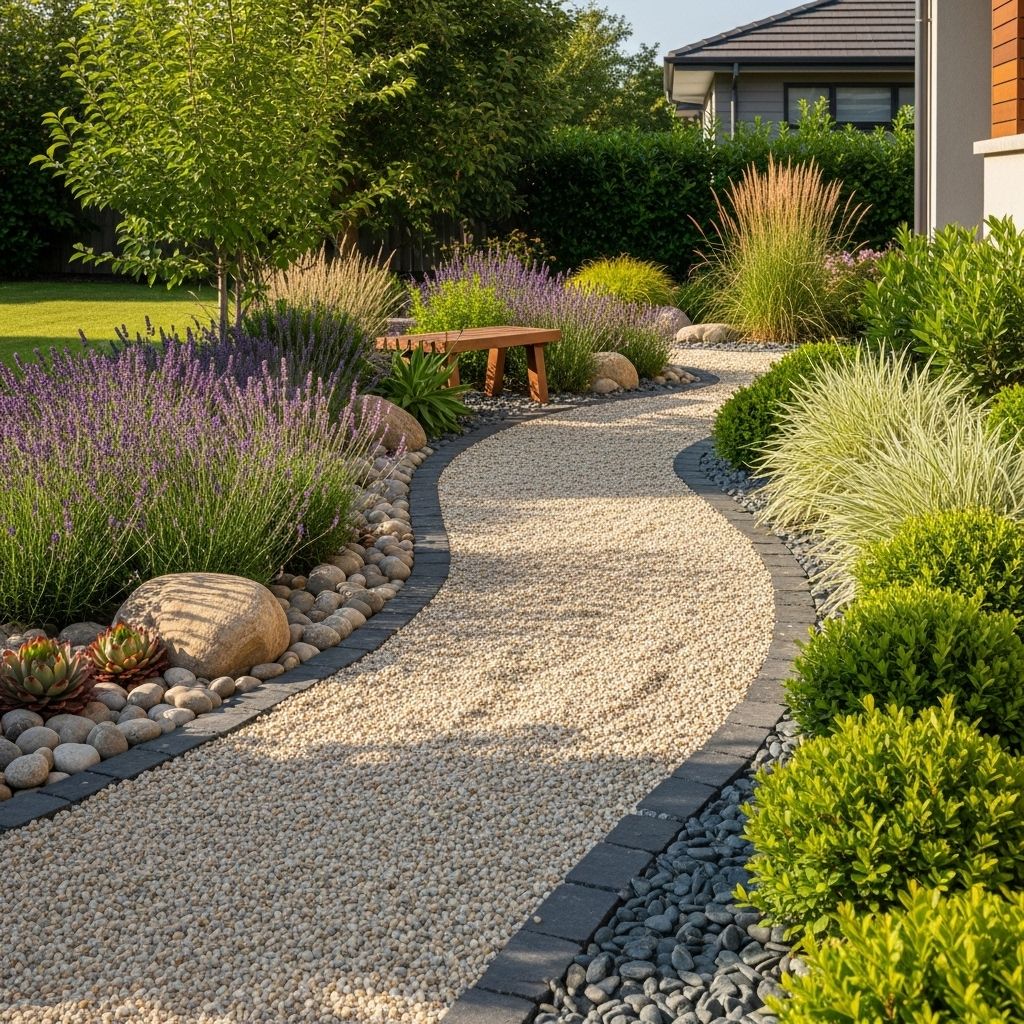
Image: HearthJunction Design Team
The Humble Yet Versatile Pea Gravel
How did pea gravel get its name? The answer is delightfully straightforward – these small, rounded stones are approximately the size of a pea. As far as gravel materials go, pea gravel stands in a league of its own. The rounded fragments of pea-sized stone create that satisfying crunch underfoot reminiscent of walking on crispy cereal – a small but significant sensory pleasure in any garden landscape.
Often overlooked in favor of more fashionable hardscaping options (limestone, we see you), pea gravel deserves recognition for its natural appearance, excellent drainage properties, and remarkable versatility. Whether you’re planning to build a weed-free garden path, create an elegant border around your vegetable plot, or install a driveway without depleting your savings, pea gravel offers numerous advantages that make it worthy of consideration for your next landscaping project.
What Exactly Is Pea Gravel?
Pea gravel consists of small, rounded stones measuring approximately 1/8 to 3/8 inches in diameter. Unlike angular crushed stone or larger river rocks, pea gravel has been naturally weathered and tumbled smooth by water over time, resulting in its characteristic rounded shape. This natural process gives the stones their smooth texture and varied, earthy colors ranging from soft tans and whites to rich browns, grays, and even soft blues.
The small, uniform size of pea gravel makes it comfortable to walk on while providing excellent drainage. Its natural appearance blends harmoniously with various landscape designs, from formal gardens to more relaxed, naturalistic settings. The multi-colored aspect of pea gravel adds visual interest and depth to any hardscaping project.
Why Choose Pea Gravel for Your Landscape?
Before diving into installation methods and creative applications, let’s explore the compelling reasons why pea gravel might be the ideal choice for your hardscaping needs:
Affordability
Compared to other hardscaping materials like pavers, flagstone, or concrete, pea gravel represents a budget-friendly alternative. The cost typically ranges from $30 to $65 per cubic yard, making it an economical option for covering larger areas such as driveways or extensive garden paths. This affordability doesn’t compromise on aesthetic appeal, as pea gravel offers a timeless, natural look that enhances rather than dominates the landscape.
Excellent Drainage
One of pea gravel’s most significant advantages is its permeability. Unlike solid surfaces that contribute to runoff problems, pea gravel allows water to filter through naturally into the soil beneath. This property helps prevent puddles, reduces erosion, and contributes to more sustainable water management in your landscape. In an era of increasing environmental consciousness, this natural drainage capability makes pea gravel an environmentally responsible choice.
Low Maintenance
Once properly installed, pea gravel requires minimal upkeep. There’s no need for sealing, staining, or specialized cleaning techniques. Occasional raking to maintain an even surface and periodic topping up every few years are typically all that’s required to keep a pea gravel installation looking its best. For busy homeowners or those seeking low-maintenance landscaping solutions, this represents a significant advantage.
Versatility in Design
Few materials can match pea gravel’s versatility in landscape design. Its neutral colors complement virtually any architectural style or garden aesthetic. The material can be used for formal paths with defined edges, casual woodland trails, modern minimalist courtyards, or traditional country garden designs. This chameleon-like quality allows pea gravel to enhance rather than compete with your existing landscape elements.
Instant Weed Suppression
When installed properly with adequate depth and appropriate underlayment, pea gravel serves as an effective weed deterrent. The combination of proper preparation and the weight of the gravel creates an environment where weeds struggle to establish themselves, resulting in less maintenance and fewer herbicide applications.
How to Install Pea Gravel
Compared to other hardscaping materials, installing pea gravel is relatively straightforward, even for those with limited DIY experience. The process requires basic tools and materials but demands attention to proper preparation for long-lasting results.
Materials You’ll Need
- Pea gravel (calculate approximately 1 cubic yard per 100 square feet for a 3-inch depth)
- Coarse base rock or crushed rock for the foundation layer
- Landscape fabric (optional but recommended for areas with persistent weed problems)
- Metal, plastic, or stone edging materials (for defined borders)
- Rake, shovel, and tamper or plate compactor
- Wheelbarrow for transporting materials
- Measuring tape and marking materials
Step-by-Step Installation Process
For a durable, attractive pea gravel installation, follow these essential steps:
1. Plan and mark your area – Begin by clearly defining the area where you’ll install the pea gravel. Use stakes and string or marking paint to outline the space. Consider factors like drainage patterns, traffic flow, and integration with existing landscape features.
2. Excavate the area – Dig approximately 6 inches deep across your marked area. Remove any existing vegetation, rocks, or debris. The goal is to create a clean canvas for your new installation. For pathways or areas with drainage concerns, consider sloping the excavated area slightly away from structures to promote proper water flow.
3. Install edging – If you want defined borders for your pea gravel area, now is the time to install edging materials. Options include metal strips, plastic landscape edging, natural stone, brick, or pressure-treated timber. Secure these firmly according to the manufacturer’s instructions to prevent future shifting.
4. Compact the soil – Use a tamper or plate compactor to firmly pack down the excavated soil. This creates a stable foundation for your gravel layers and helps prevent future settling issues. Pay particular attention to achieving a uniform, level surface, though slight intentional grading for drainage is acceptable.
5. Add landscape fabric (optional) – For areas with persistent weed problems, consider laying landscape fabric over the compacted soil. This creates an additional barrier against weed growth. Overlap seams by at least 6 inches and extend the fabric up the sides of your edging. While this can be effective for weed suppression, be aware that landscape cloth may deteriorate over time or become visible if gravel shifts significantly.
6. Add base rock layer – Spread a 2-inch layer of coarse base rock or crushed rock over the prepared surface. This foundation layer stabilizes the pea gravel above it and contributes to proper drainage. Use a rake to distribute the base rock evenly, then compact it thoroughly with your tamper or plate compactor.
7. Add pea gravel – Finally, add your 3-inch layer of pea gravel over the base rock. Use a rake to spread it evenly across the entire area. The combined depth of base rock and pea gravel should fill your excavated area completely, creating a surface that’s level with or slightly above the surrounding landscape, depending on your design preferences.
Creative Applications for Pea Gravel
The versatility of pea gravel extends beyond basic paths and driveways. Consider these innovative ways to incorporate this material into your landscape design:
Garden Pathways
Perhaps the most common application, pea gravel creates charming garden paths that complement any style of landscape. For a more structured look, consider combining pea gravel with stepping stones or pavers in alternating patterns. The contrast between solid stepping stones and the textured gravel creates visual interest while providing stable footing.
Patios and Seating Areas
Pea gravel makes an excellent surface for informal patios and seating areas. The material’s natural appearance works particularly well in cottage gardens or woodland settings. To create a more stable surface for furniture, consider using pea gravel as infill between larger pavers or flagstones, giving you the best of both worlds – the solid foundation for furniture legs and the permeable, crunchy texture of gravel.
Driveways
For a budget-friendly alternative to asphalt or concrete, pea gravel driveways offer rustic charm and excellent drainage. The key to a successful gravel driveway lies in proper preparation with adequate base materials and regular maintenance. Consider installing plastic grid systems under the gravel in high-traffic areas to prevent displacement and rutting.
Fire Pit Surrounds
Pea gravel creates an ideal non-combustible zone around fire pits, providing both safety and aesthetic appeal. The natural colors of the stone complement the warmth of a fire feature while providing a clear visual boundary for safe gathering.
Mediterranean-Style Gardens
For drought-tolerant landscapes or Mediterranean-inspired designs, pea gravel serves as an excellent groundcover between plants. The neutral tones highlight the silvery foliage of olive trees, lavender, and other Mediterranean flora while providing the sharp drainage these plants often require.
Maintenance Tips for Pea Gravel Installations
While pea gravel requires less maintenance than many hardscaping alternatives, some regular care will keep your installation looking its best for years to come:
Regular raking – Occasionally rake the surface to redistribute gravel that may have shifted due to foot traffic or weather conditions. This simple step helps maintain an even appearance and prevents thin spots from developing.
Weed management – Even with proper installation, some persistent weeds may eventually appear. Address them promptly by hand-pulling or using targeted herbicide applications. Avoid broadcast spraying which might harm surrounding plants.
Periodic refreshing – Every few years, you may need to add a thin new layer of pea gravel to replace material that has sunk or been displaced. This ‘topping up’ helps maintain the proper depth and refreshes the appearance of your installation.
Leaf removal – In autumn, remove fallen leaves promptly to prevent them from decomposing into the gravel and forming a layer of organic matter that could support weed growth.
Snow management – If you live in a snowy climate, use plastic snow shovels rather than metal ones when clearing pea gravel surfaces to avoid accidentally scooping up the gravel along with snow.
Frequently Asked Questions About Pea Gravel
Q: Is pea gravel suitable for high-traffic areas?
A: Pea gravel can work in high-traffic areas when properly installed with adequate depth and a solid base layer. However, be prepared for more frequent maintenance in these zones, as the gravel will shift more readily under consistent use. For extremely high-traffic areas, consider incorporating stepping stones or pavers to provide more stable footing.
Q: Will pea gravel wash away in heavy rain?
A: Properly installed pea gravel with appropriate edging should resist washing away in most rainfall conditions. However, in areas with steep slopes or water channeling, erosion can occur. In these situations, consider using slightly larger gravel or installing check dams or drainage solutions to manage water flow.
Q: How much pea gravel do I need for my project?
A: Calculate the volume by multiplying the length, width, and depth of your area in feet, then divide by 27 to convert to cubic yards (the standard measurement for purchasing gravel). For a 10′ x 10′ area with 3″ depth, you would need approximately 1 cubic yard of pea gravel. Most suppliers recommend ordering 5-10% extra to account for settling and compaction.
Q: Is pea gravel safe for children and pets?
A: Pea gravel is generally safe for children and pets, as its rounded edges are less sharp than angular gravel. However, very small children should be supervised to prevent them from putting pieces in their mouths. For pets, most adapt well to walking on pea gravel, though some dogs may initially find it an unusual texture underfoot.
Q: Can I install pea gravel myself or should I hire a professional?
A: Pea gravel installation is one of the more DIY-friendly landscaping projects, especially for smaller areas. The basic techniques require no specialized skills, though the work can be physically demanding. For large installations or projects requiring significant grading or drainage solutions, professional assistance may be worthwhile.
With its natural beauty, practical benefits, and endless design possibilities, pea gravel remains one of the most versatile materials in the landscape designer’s toolkit. Whether you’re creating a simple garden path or reimagining your entire outdoor living space, this humble material offers an appealing combination of aesthetics, functionality, and value that few alternatives can match.
References
- https://www.gardenista.com/posts/hardscaping-101-pea-gravel/
- https://www.gardenista.com/garden-design-101/hardscape/gravel-decomposed-granite-design-guide/
- https://www.gardenista.com/tag/pea-gravel/
- https://www.pinterest.com/pin/hardscaping-101-pea-gravel-gardenista–191966002841620804/
- https://www.gardenista.com/posts/hardscaping-101-gravel-gardens/
Read full bio of Anjali Sayee





